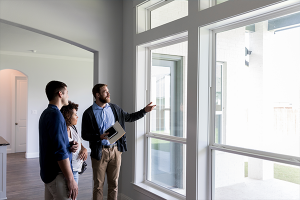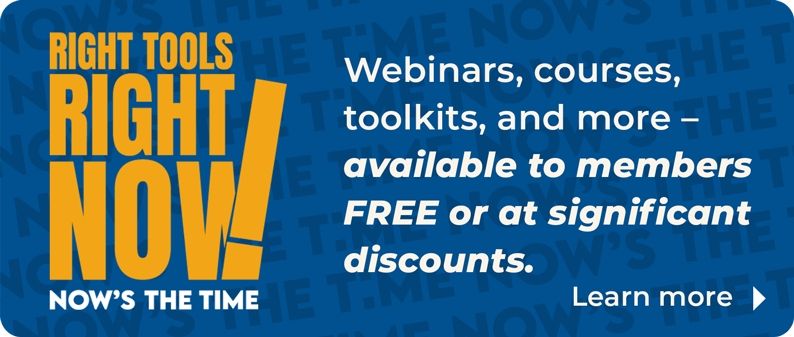References
NAR Library & Archives has already done the research for you. References (formerly Field Guides) offer links to articles, eBooks, websites, statistics, and more to provide a comprehensive overview of perspectives. EBSCO articles (E) are available only to NAR members and require the member's nar.realtor login.
Commuting Issues
Surveys Reveal What Some Would Give to End Their Commute (Business News Daily, Aug. 5, 2022)
- “Several national and local studies have uncovered strong negative correlations between commuting and job satisfaction (and overall well-being).
- Many people would take pay cuts – some small, others substantial – to shorten their commutes.
- The shift to remote work amid the COVID-19 pandemic reduced commutes and increased employees’ well-being. Employers can also save money by switching teams to half-remote, half-in-person arrangements.”
Commuting’s Impact on Creativity (Harvard Magazine, Sep.-Oct. 2021)
A study of inventors and commute length “revealed that for every 10 miles of added travel distance, the firms that employed those inventors registered 8 percent fewer patents. Even more dramatic, the patents’ quality—measured by the number of times a patent was cited by other inventors—dropped 11 percent with every 10 miles added to an inventors’ commute.”
More Workers Are Returning to the Office. The Pandemic-Era Commute Might Be Changed Forever. (The Washington Post, Jul. 30, 2021)
As some offices shift to fully remote or hybrid work environments, experts predict a significant impact on traffic and public transit patterns for years to come.
60 Million Fewer Commuting Hours Per Day: How Americans Use Time Saved by Working from Home (Becker Friedman Institute, Sep. 20, 2020)
“Drawing on original surveys of our own design, we estimate that the pandemic-induced shift to working from home lowers commuting time among Americans by more than 60 million hours per work day. Cumulative time savings over the past seven months exceed 9 billion hours. Our survey data also say that Americans devote about 35% of the time savings to their primary jobs and about 60% to work activities of all sorts, including household chores and child care. The allocation of time savings is broadly similar for men and women and across groups defined by race and ethnicity, but it differs substantially by education group and between persons with and without children at home.”
Commuting and Where to Live
The Number of People Primarily Working from Home Tripled Between 2019 and 2021 (U.S. Census Bureau, Sep. 15, 2022)
““Work and commuting are central to American life, so the widespread adoption of working from home is a defining feature of the COVID-19 pandemic,” said Michael Burrows, statistician in the Census Bureau’s Journey-to-Work and Migration Statistics Branch. “With the number of people who primarily work from home tripling over just a two-year period, the pandemic has very strongly impacted the commuting landscape in the United States.””
Consumers Discuss Affordability and the Impact of Remote Work on Housing Preferences (Fannie Mae, Apr. 12, 2022)
“When we asked respondents whether their remote work arrangements would impact their willingness to live farther away, thereby potentially creating longer commute times, significantly more renters than homeowners responded that they would be willing to do that. In fact, a quarter of renters with some form of remote work arrangement would be willing to live further away from the office, and an additional 13% would be willing to completely relocate to another region.”
For Home Buyers, Length of Commute Drops in Importance, New Data Shows (Wall Street Journal, Jul. 21, 2021)
“[C]ommute length has declined in importance for home buyers, as many workers expect to travel to their offices less often going forward. At the same time, rapidly rising prices have made affordability a bigger concern for many buyers.”
NAR 2020 Community and Transportation Preference Survey (National Association of REALTORS®, Jul. 2020)“Results from the Coronavirus Update to the 2020 Community and Transportation Preferences Survey generally continue the trends from previous surveys of the top fifty metropolitan areas. However, younger respondents – especially those with children at home – show some effects of the pandemic. Among these respondents there is a reduced need to be near highways and public transit or to have a home with a short commute to work.”
Realtor.com Commute Time Filter (realtor.com®, Jul. 3, 2019)Search tool from Realtor.com® allows potential buyers to filter their home search by length of commute during rush hour and off-peak times.
Zoom Towns
'Brutal' Housing Prices Hit America's Zoom Towns – Markets Once Flourishing in The Pandemic (msn.com, Sep. 2, 2022)
“After two years of bidding wars, above-asking and no contingency offers, many of the Zoom towns are now seeing a massive slowdown.”
Could Zoom Towns Go Bust? (Multifamily Dive, Mar. 21, 2022)
“If there are pockets of risk, it’s where you are seeing people who are putting shovels in the ground to develop units based on what they perceive to be this structural change in migration patterns because of the pandemic,” said Ryan Severino, chief economist for the Chicago-based commercial real estate services firm JLL. “I’m not sure how durable that is.”
Are Zoom Towns the New Boomtowns? (NAIOP, Apr. 29, 2021)
While workers move to zoom towns in search of more space, lower costs of living, and proximity to outdoor amenities, they also bring challenges such as heavier traffic, school overcrowding, and increased demand on broadband services.
What Are Zoom Towns, and Should You Invest in One? (Millionacres, Nov. 12, 2020)
“If you're going to invest in a zoom town, do your research and be sure to proceed with caution. While buying in a zoom town may work out, be aware of the ways your investment could backfire.”
Green Commuting
First Federal Data on Pandemic-Era Bike Commuting (Bike League, Sep. 15, 2022)
“The story of commuting to work during the Covid-19 pandemic is one of disruption. As we socially distanced, shifted to remote work, and followed public health guidance, many people found new ways to work - most often from home. With the release of 1-year estimates on how people commuted to work in 2021 from the American Community Survey, we can begin to quantify the shift to working from home and the impact of that shift on biking, walking, and transit and how they compare to other types of commutes.”
Commuting by Train Helps Limit Your Carbon Footprint (Edenred, Jun. 15, 2022)
“Public transportation in the form of trains is a much more environmentally friendly way to commute. The use of mass transit in the form of high-speed rails can greatly reduce the impact of CO2 emissions on the environment. Trains also reduce the deterioration of communities’ infrastructure. Furthermore, trains provide personal benefits such as the reduced need for gas and more efficient methods to get to urban jobs.”
The State of Bike Commuting in The US (Bike Adviser, May 2021)
Statistics on bike commuting in the U.S. show that western states have the highest percentages of bike commuters while southeastern states have the lowest. The majority of bike commuters are men, making up 71% of all people who commute by bike.
Switching from Cars to Bikes Cuts Commuting Emissions by 67% (Bloomberg, Mar. 31, 2021) E
“Small changes in citizens' transport habits can significantly cut their carbon footprint, according to an in-depth study of commuting data from more than 3,800 people across seven cities. Choosing a bike over a car just once a day reduces an average citizen's carbon emissions from transport by 67%...”
Commuting Websites
Public Transportation Savings Calculator (Public Transportation.org, 2022)
Tool from the National Alliance of Public Transportation Advocates uses gas mileage, commute length, and fuel cost to calculate the annual savings of using public transportation rather than a car.
Housing + Transportation Affordability Index (Center for Neighborhood Technology)
“The Housing and Transportation (H+T®) Affordability Index provides a comprehensive view of affordability that includes both the cost of housing and the cost of transportation at the neighborhood level.”
Walk Score (WalkScore)
Locations are scored by walkability, transit, and bike infrastructure. Enter a work location to calculate the time length of various commuting options.
U.S. Local & State Transit Links (American Public Transportation Association, 2022)
Listing of all transit agencies across the U. S., organized by state. Includes local and regional agencies of every size.
eBooks & Other Resources
eBooks.realtor.org
The following eBooks and digital audiobooks are available to NAR members:
Hello, Bicycle: An Inspired Guide to the Two-Wheeled Life (eBook)
Knack Cycling for Everyone: A Guide to Road, Mountain, and Commuter Biking (eBook)
Will Work from Home (eBook)
Have an idea for a real estate topic? Send us your suggestions.
The inclusion of links on this page does not imply endorsement by the National Association of REALTORS®. NAR makes no representations about whether the content of any external sites which may be linked in this page complies with state or federal laws or regulations or with applicable NAR policies. These links are provided for your convenience only and you rely on them at your own risk.











